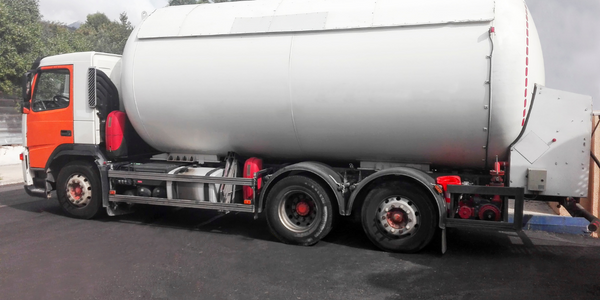Download PDF
AlienVault USM™ Helps Community Bank Secure its Assets and Pass FDIC Audit
Technology Category
- Cybersecurity & Privacy - Intrusion Detection
- Cybersecurity & Privacy - Security Compliance
- Analytics & Modeling - Predictive Analytics
Applicable Functions
- Business Operation
- Quality Assurance
Use Cases
- Intrusion Detection Systems
- Regulatory Compliance Monitoring
Services
- System Integration
- Training
The Challenge
In 2015, the Bank of New Glarus faced an impending Federal Deposit Insurance Corporation (FDIC) compliance audit. With less than four months to prepare, Patrick Collins, the lead IT manager, needed to find and implement an intrusion detection tool that would help the bank pass the audit. Collins considered GFI’s LanGaurd and SolarWinds Log & Event Manager (LEM) but found them lacking in certain features and robustness. The challenge was to find a comprehensive and cost-effective solution that could meet the stringent requirements of the FDIC audit.
About The Customer
The Bank of New Glarus, established in 1893, is a community bank located in New Glarus, Wisconsin. It started with $12,000 in capital and has grown to include over 100 employees across six locations. The bank provides personal and commercial banking services to customers in the region, including many from the agricultural industry. With a small IT team of just two people, the bank relies heavily on efficient and effective IT solutions to manage its operations and ensure security. The bank's commitment to maintaining a secure network is evident in its adoption of advanced security management platforms.
The Solution
Patrick Collins decided to implement the AlienVault Unified Security Management (USM) platform after evaluating its features and cost-effectiveness compared to other solutions. AlienVault USM offered comprehensive features, including Netflow analysis, which were crucial for passing the FDIC audit. The platform allowed Collins to scan the bank's system for vulnerabilities, act on reports, and track intrusion alerts. The FDIC auditors were impressed by the platform's ability to generate alerts and provide extensive reports, which were crucial for compliance. AlienVault USM also offers hundreds of built-in compliance reports for various regulatory requirements, which are automatically updated as asset and vulnerability data changes. This feature allowed the bank to customize reports based on their compliance priorities easily.
Operational Impact
Quantitative Benefit
Related Case Studies.

Case Study
Remote Monitoring for Environmental Compliance
Emerson wanted to provide a connected environmental analyzer to their customers. They wanted to leverage IoT technologies to provide a software solution that was easy to use, real-time and centralized. Compliance with pollution control board guidelines and the ability to remotely calibrate and troubleshoot these devices was the primary objective. Requirements - Centralized Remote Monitoring. - IoT Based Smart Environmental Analyzers. - Remote Calibration and Troubleshooting. - User Friendly Application. - Reporting & Dashboards. - Compliance with pollution control board guidelines.

Case Study
Protecting a Stadium from Hazardous Materials Using IoT2cell's Mobility Platform
There was a need for higher security at the AT&T Stadium during the NFL draft. There was a need to ensure that nuclear radiation material was not smuggled inside the stadium. Hazmat materials could often be missed in a standard checkpoint when gaining entry into a stadium.

Case Study
ELI LILLY ADOPTS MICROMEDIA’S ALERT NOTIFICATION SYSTEM
Pharmaceutical production is subject to a strict set of enforced rules that must be adhered to and compliance to these standards is critically necessary. Due to the efforts of WIN 911’s strategic partner Micromedia, Lilly was able to adopt an alarm notification infrastructure that integrated smoothly with their existing workflows and emergency hardware and protocols. These raw energy sources enable the industrial process to function: electricity, WIN-911 Software | 4020 South Industrial Drive, Suite 120 | Austin, TX 78744 USA industrial steam, iced water, air mixtures of varying quality. Refrigeration towers, boilers and wastewater are monitored by ALERT. Eli Lilly identified 15000 potential variables, but limitations compelled them to chisel the variable list down to 300. This allowed all major alarms to be covered including pressure, discharge, quantity of waste water discharged,temperature, carbon dioxide content, oxygen & sulphur content, and the water’s pH.

Case Study
Visual Management on Gas Tankers
Gas tankers are massive ships with a limited crew, making them extremely difficult to monitor. Video surveillance systems, which use a large number of widely distributed devices, and fire prevention systems are both crucial elements of a gas tanker monitoring system.The system used for this application is a legacy analog CCTV surveillance system that is completely independent from the main monitor and control SCADA system. With this system, the administrator responds to an event by first using the SCADA system to locate the event, and then accesses the appropriate surveillance camera from the CCTV system to view the location. The goal is to upgrade the system so that only one step is required. This is done by integrating the CCTV surveillance system into the SCADA system, in which case the surveillance system becomes a SCADA sub-system, making centralized control and monitoring possible.System Requirements- Upgrade to an IP video surveillance system for integration with the existing SCADA system- Live video display (through the SCADA system)- Enable events in the SCADA system to automatically trigger live video display- All the devices need to be of rugged design and have an anti-explosion defense

Case Study
IoT Solutions Give Commercial Fishing Real-time insights
Technology to support vessels in the commercial fishing industry had not changed significantly since the advent of radar. Over the past 40 years commercial fishing in the United States has continued to be one of the most active, yet regulated industries. The combination of federal regulations and lack of technology created an opportunity for Faria Watchdog to go-to-market with a solution.

Case Study
EMC's Transition to SMS for Real-Time IT Alerts
EMC, a global leader in cloud computing, data storage, and data virtualization, was struggling with an inefficient and slow method of alerting its 68,000 employees about IT system updates. The traditional method involved drafting an email, proofing it, getting approval from several stakeholders, and finally sending it. This process was not only labor-intensive but also unreliable as it depended on the user's email being unaffected and the user actually opening and reading the email. After sending 1.2 million alert emails in a single month, EMC decided to find a more efficient and immediate way to alert employees. The challenge was to find a solution that was not only faster and less labor-intensive but also globally available and scalable to EMC's needs.




